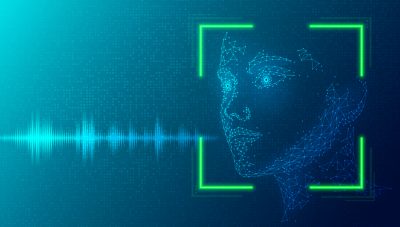Deception by design: The rising threat of AI-generated deepfakes
Today, AI tools like ChatGPT, Midjourney, ElevenLabs, and FaceMagic have made it alarmingly easy to create deepfakes—realistic but fake images, videos, and voices. What’s even more alarming is that you no longer need to be a tech expert to whip up a convincing fake.
This rise in accessible AI tech has sparked serious concerns about how it can be misused, especially when it comes to creating deepfakes that can impersonate real people. These AI-generated deepfakes bring with them a host of risks, including identity theft, fraud, and a growing distrust in digital content.
Identity theft and fraud
Deepfakes are becoming a go-to method for bypassing biometric security systems. Imagine someone creating a fake version of your face or voice—this could be used to trick security systems into thinking it’s really you.
That’s how fraudsters can gain access to sensitive info or accounts without breaking much of a sweat. This isn’t just a minor nuisance; it’s a significant threat to both personal and organizational security.
Earlier this year, fraudsters used deepfake technology to impersonate the CFO of a multinational company during a video call. As a result, a finance officer was tricked into transferring $25 million. The entire meeting, which the employee believed was with real colleagues, was composed of deepfake recreations, according to Hong Kong police.
Erosion of trust and misinformation
One of the most concerning issues with deepfakes is how they can erode public trust. When you can’t tell if what you’re seeing or hearing is real, it becomes easier for people to be manipulated.
With this, even reputable media and news platforms are losing their integrity.
In March 2023, an AI-generated image of Pope Francis wearing a Balenciaga coat, created by Midjourney, went viral on social media. Many users, including reputable media outlets, initially believed the image was real before it was revealed as a fake.
Deepfakes could be used to create fake news or impersonate public figures, especially during crucial moments like elections. This makes it even more critical to develop ways to detect and regulate these deepfakes.
How can we tackle these risks?
1. Advanced detection algorithms
To stay ahead of the game, we need to build and constantly improve AI-driven detection systems. These systems can pick up on subtle telltale signs of deepfakes—like weird facial movements or digital glitches—that might slip past the human eye.
However, this can turn into a cat-and-mouse game between AI detection developers and deepfake creators. As detection methods become more sophisticated, so too do the techniques used by those generating deepfakes.
This ongoing struggle requires constant innovation, where developers must anticipate and counteract the next wave of deepfake advancements before they become widespread. To effectively combat this, collaboration between researchers, technologists, and policymakers is essential, ensuring that detection algorithms evolve rapidly and are deployed widely.
2. Blockchain technology
Since its onset in 2009, blockchain has had a number of practical uses due to its nature and functionality.
By embedding a unique digital signature in original media and recording it on a blockchain, any tampering or faking becomes much easier to spot. This could help ensure that what you see online is the real deal.
3. Biometric security enhancements
Strengthening biometric security is another key move. We could start using systems that combine different types of biometric data, like facial and voice recognition, making it harder for deepfakes to fool security measures.
On top of that, enhancing liveness detection—ensuring that the person being scanned is real and not just a video—can help tighten security.
An example of a company already doing this is Apple. Apple’s Face ID not only uses facial recognition but also incorporates depth sensors and infrared imaging to ensure that a live person is being scanned, rather than a photo or video.
This combined with other security measures like multi-factor authorizations used by Google and Microsoft makes it even harder for fraudsters to gain access to systems using deepfakes.
4. Regulatory frameworks and legal measures
Governments need to step up with laws that crack down on the malicious use of deepfakes, especially when they’re used for identity theft or spreading misinformation.
Another good idea that we see being implemented today would be requiring AI-generated content to be clearly labeled, so people can tell if something’s fake from the start.
5. Insurance products
Cyber insurance policies could be expanded to cover losses from deepfake-related incidents, like identity theft or reputational damage.
Coalition Insurance has introduced a new AI coverage option to its Cyber insurance policies. This endorsement broadens the definition of a data breach to encompass incidents involving artificial intelligence, acknowledging AI as a potential security risk in computer systems.
Insurtech start-ups could also offer services to help detect and respond to deepfake threats, helping businesses bounce back quicker and limit their losses.
Bottom line
As deepfakes continue to evolve, so too must our defenses. AI-driven detection systems, enhanced biometric security measures, and specialized insurance products are all critical components in the fight against this growing threat. However, this is not just a technological challenge; it’s also a matter of collaboration and adaptability.
Insurance companies, particularly those in the insurtech space, have a unique opportunity to lead in this battle by offering products that not only provide financial protection but also contribute to prevention and response strategies. By working together—across industries and sectors—we can create a more secure digital landscape, where the risks of deepfakes are mitigated, and the benefits of AI are harnessed for good.


